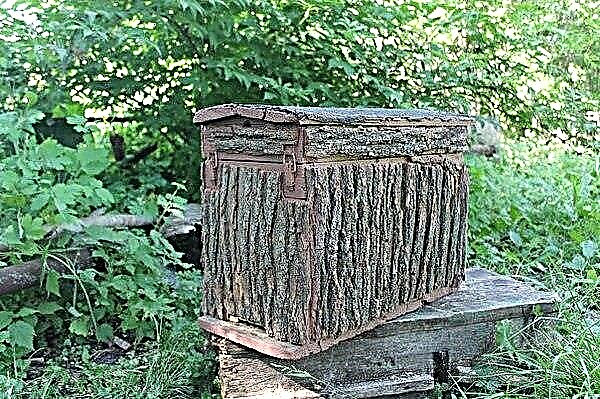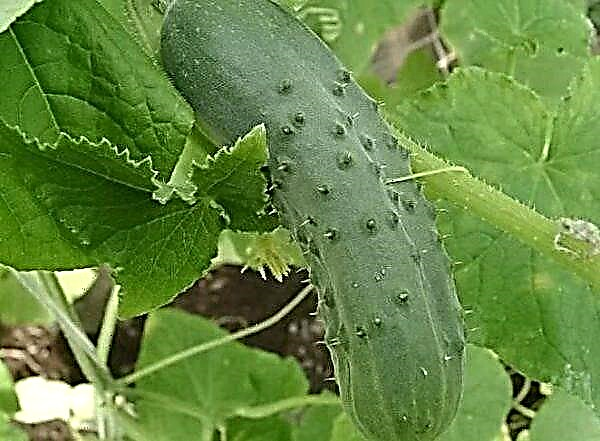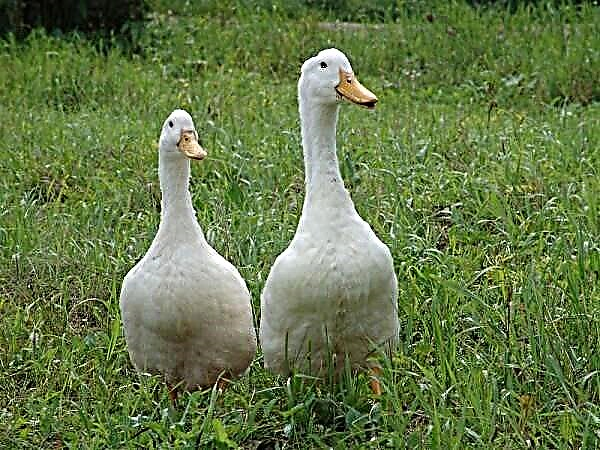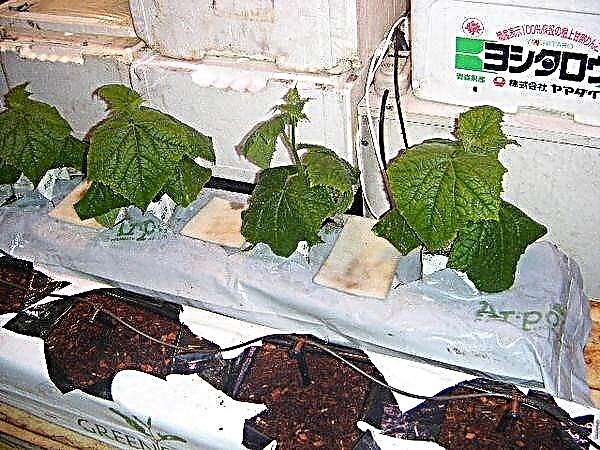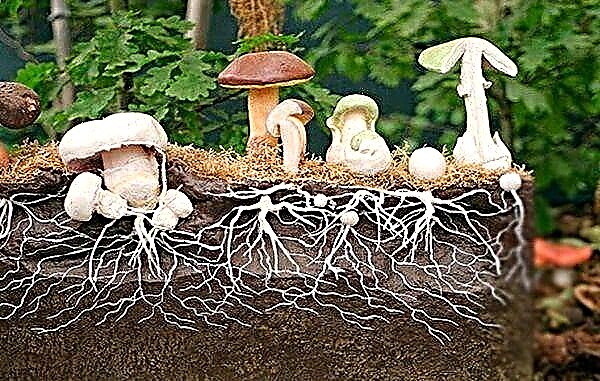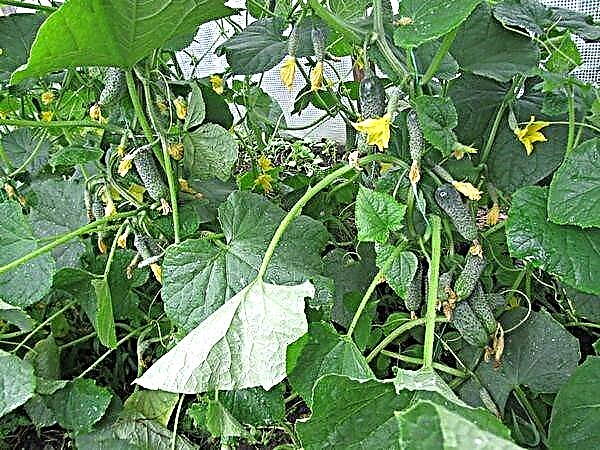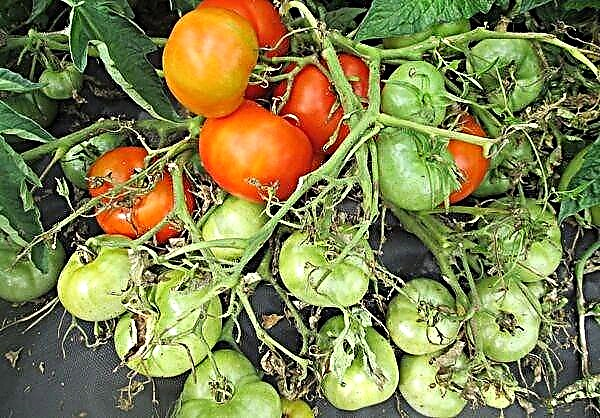Such a loud name of the variety will undoubtedly attract the attention of experienced gardeners. After all, everyone dreams of good quality fruits and a high yield. Tomato One hundred pounds really lives up to its name, and below we consider its characteristics and description, advantages, disadvantages and growing rules.
Characteristics and description of the tomato variety Hundred Pounds
This variety was bred by Russian breeders. This type of tomato mid-early ripening period. Ripening period according to characteristics - 120-125 days... Differs in high productivity.
This type of tomato is grown, both in greenhouses and in the open field... When grown in a greenhouse, the bush, according to the description, grows to a height of 2 meters. In the open field it grows to a height of 1.5 meters.
The leaves are dark green in color, there are not many of them on the trunk. Fruits are pear-shaped, ribbed. Fruit weight from 160 to 350 gr., the color is bright red. The pulp is fleshy, the taste is sweet, there are few seeds. The skin is firm but not rough.

Grows in brushes of 5-6 pieces.
Advantages and disadvantages
The tomato variety One hundred pounds, like any other vegetable crop, has its advantages and disadvantages. The advantages of this variety include:
- good yield;
- great taste;
- do not crack;
- high content of nutrients;
- low calorie content;
- can grow both in greenhouses and in open ground, with proper care in any regions;
- long fruiting period;
- It does not require special care;
- excellent presentation;
- good transportability;
- widespread use in cooking;
- able to ripen;
- high resistance to diseases.
The disadvantages of this variety include the need for pinching and tying bushes.

Preparing and sowing seeds for seedlings
Store-bought seeds require no preparation other than germination. Seeds collected with your own hands must be prepared for sowing.
Seed preparation is performed in several stages:
- Selection... Soak the seeds in a saline solution for 10 minutes. Leave only the seeds that have sunk to the bottom. Remove floating seeds, as they are not suitable for planting;
- Disinfection... In order to prevent diseases, treat the seeds with a 1% solution of potassium permanganate;
- Soak... For better germination, soak in a growth stimulator;
- Hardening perform to improve the adaptation of the plant to any climatic changes. Place the seeds in a cloth bag and put in the refrigerator for 13 hours;
- Warming up ... The seeds are heated for 6 hours after hardening at a temperature of +20 degrees;
- Germination... Place the seeds in a saucer on damp filter paper. Make sure that the paper remains damp at all times while the seeds germinate.
Before planting seeds, you must prepare the ground... This can be done as follows:
- Mix the soil from the garden in equal parts with peat and sifted river sand. To normalize the acidity of the soil, add ash to the prepared soil;
- Disinfect with a hot solution of strong manganese.

Pour the prepared soil into a container and level well. Sow seeds in grooves to a depth of 0.7 cm with a distance of 2 cm from each other. Sprinkle the grooves with a thin layer of soil and moisten with a spray bottle. Cover the container with polyethylene and take it to a dark room with a temperature +25 degrees.
After 5 days, when the first shoots appear, remove the polyethylene from the container and bring the seedlings into a lighted room. To get good seedlings you need create additional lighting... This can be done using fluorescent lamps. Watering should be moderate.
When two leaves appear in seedlings, they are necessary plant in separate pots with a capacity of one liter.
It is necessary to transplant very carefully so as not to damage the not yet strengthened root system.
It is better to transplant seedlings, carefully digging them up, with a clod of earth from the previous place of growth. If the seedlings have 3-4 leaves, you must perform the procedure hardening.

To do this, the first two days, you should open the window to the room for 3 hours. You need to make sure that there are no drafts. For the next three days, carry seedlings to an open loggia for a full daylight hours. Two days before transplanting to greenhouses, leave the seedlings on the loggia overnight.
Transplanting seedlings into open ground
Transplant seedlings into greenhouses aged 60 days... If you plan to grow outdoors, then transplant to a permanent place of growth is performed May 10-15.
The frequency of planting seedlings in a row - 35-45 cm... Row spacing 65-75cm... Water the soil with a hot solution of strong manganese before replanting the seedlings. After transplanting, the seedlings must be watered from a watering can, mulched with sawdust or humus and apply complex fertilizer. Subsequent watering should be moderate as the soil dries out.
A bush should be formed in 1 or 2 stems... It is necessary to tie the bushes to the supports as soon as the top of the bush begins to curl up.

During the growth process, it is necessary to fertilize the plants fermented mullein... During the flowering period, the root system is fertilized ash or fertilizers containing nitrogen... At the moment of fruit formation with a solution soda and boric acid or fertilizers containing magnesium sulfate.
Diseases and pests
Despite the fact that the plant has good immunity to diseases, experienced gardeners recommend preventive measures:
- When landing avoid thickening;
- Do not plant tomatoes in the soil where carrots, cucumbers, cabbage, onions, turnips previously grew;
- Do not water in high humidity conditions;
- To water under the root;
- Top dressing with potassium-phosphorus fertilizers.

Tomatoes can be affected by the following insects:
- spider mite;
- Colorado beetle;
- aphid;
- greenhouse whitefly.
To combat aphids, you can wash the leaves of the bush laundry soap solution... Other pests can be dealt with by spraying plants with special preparations. Insect larvae collect by hand.
Harvesting
Pudovik fruits are harvested in 120-125 days from the moment of landing. Fresh fruits are used for making salads. The juicy pulp of tomatoes is used to obtain juice, ketchup, paste. Only those fruits that ripen last on the brush can be preserved in their entirety.
According to the reviews of gardeners who grow the variety One hundred pounds on their site, good yield and excellent taste are guaranteed. And unpretentious care makes this variety available for cultivation even for beginners.


